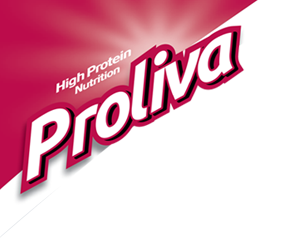-
Changes in Protein Intake May Support Skeletal Muscle Growth in CP Kids
07.02.2019The timing of protein intake can be improved with higher intake during breakfast and lunch to better support skeletal muscle growth and development in children with cerebral palsy, a new study showed.
The research article, “Dose, timing, and source of protein intake of young people with spastic cerebral palsy” was published in Disability and Rehabilitation.
The reduced trajectory of muscle strength through development is a critical factor that determines functional capacity and mobility in cerebral palsy. Adolescents with cerebral palsy are at risk of severely decreased motor abilities and physical performance, with many eventually losing the ability to walk and move.
Recent studies have shown that smaller muscles and early atrophy are already present in cerebral palsy patients as young as 15 months. Inactivity and undernutrition could contribute to the loss of muscle mass and muscle atrophy.
The past few decades have seen a growing interest in interventions to increase physical activity level or muscle strength in people with cerebral palsy. However, it is important to emphasize that in addition to training, suitable protein intake is likely critical to prevent and treat loss of muscle mass. Regular intake of high-quality proteins is crucial to allow for muscle preservation and growth.
Previously published studies have reported that the dose of protein intake of children with cerebral palsy was within normal ranges when compared to the recommendations for typically developing children. However, these studies did not look at the timing and source of the dietary protein intake.
Researchers from two Netherlands institutions — the University Medical Center Utrecht and Wageningen University and Research — and Nutricia Research addressed this question to help develop strategies to support skeletal muscle growth and development in children with cerebral palsy.
Together they studied protein intake in 19 young people with cerebral palsy, focusing on amount and time of day as well as the source. To do so, they looked at the daily intake of protein relative to body weight and the energy percentage — the amount of energy gained individually from protein, carbohydrates, and fat.
For the 19 young cerebral palsy participants (10 boys, 9 girls; ages 4-17), the researchers observed an average protein intake of 1.7 g/kg body weight per day. The vast majority of the protein intake (90%) was consumed during the main meals — breakfast, lunch, and dinner. The daily protein intake for both energy percentage and gram/kg body weight per day was sufficient, according to the Dutch recommendations and comparable to previously published values.
However, in the current study, the most protein was consumed at dinner. This merits attention because consuming a balanced distribution of protein throughout the day has been suggested to be important to maximize muscle protein synthesis rates.
So, although the total protein intake of young cerebral palsy participants was well within the recommended guidelines, meals containing 25–30 g protein or more — needed for optimal muscle maintenance — were consumed only once per day. These findings suggest that there is room for improvement concerning protein intake in cerebral palsy children.
“Our findings highlight that children with cerebral palsy who participated in this study may have suboptimal dietary practices when it comes to protein intake distribution throughout the day,” researchers said.
Lastly, the researchers observed that more than 40% of daily dietary protein intake in participants came from plant-based sources. A variety of protein sources is necessary to get nutrients, especially essential amino acids that make up proteins.
“Proteins from animal sources are considered to be high quality as they contain all essential amino acids and have a digestibility and absorption of 90-99%. Proteins from plant-based sources, on the other hand, are less digestible, varying from 70-90% and do not contain all essential amino acids,” researchers said. “As the participants in the current study consumed protein from both plant- and animal-based sources, it is likely that their diet provides all essential amino acids.”
But according to the authors, this study had one major limitation. There were few participants, and those included were of very different ages. This makes it difficult to translate the results to children with cerebral palsy in general.
Because this study observed that dietary protein intake is stacked at certain times, the researchers say more can be done to improve protein intake in children with cerebral palsy to better support skeletal muscle growth and development.
“A potentially important and perhaps overlooked opportunity to consume a high-protein snack is 30-60 minutes before going to bed. It has previously been shown that protein ingested prior to sleep is properly digested and absorbed, increasing amino acid availability and augmenting overnight muscle protein synthesis rates.”
Future studies should investigate the effect of optimizing protein intake to support skeletal muscle growth and development in large numbers of children and adolescents with cerebral palsy over long periods of time, the researchers concluded.
Source: https://cerebralpalsynewstoday.com/2019/02/04/changes-in-protein-intake-may-support-skeletal-muscle-growth-in-cerebral-palsy-kids/
Latest Blog Post
- Sugary Drinks Linked to a Higher Cancer Risk
- The Latest Research on Protein and Muscle-Building
- 27 Health and Nutrition Tips That Are Actually Evidence-Based
- Tall order: More to good growth in toddlers than just measurements
- Millions of cardiovascular deaths attributed to not eating enough fruits and vegetables

